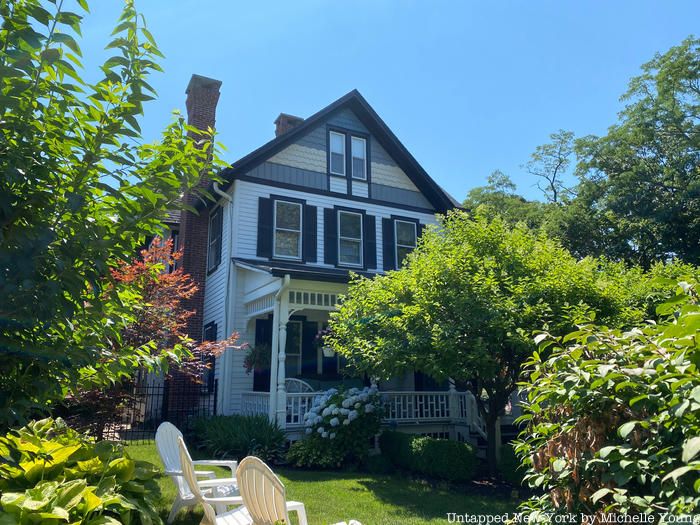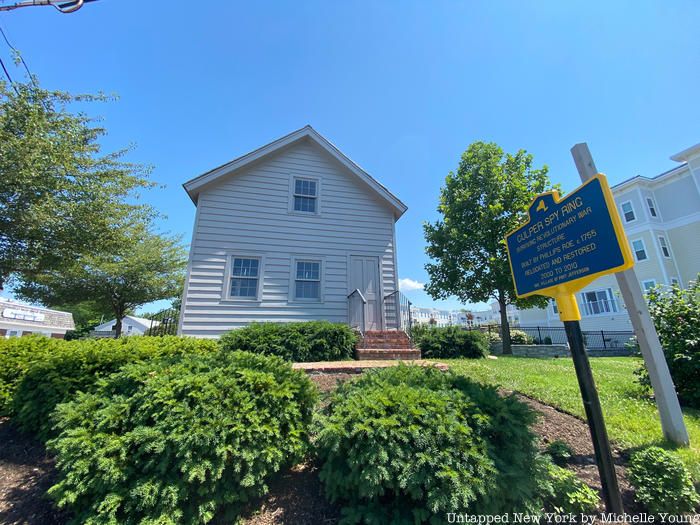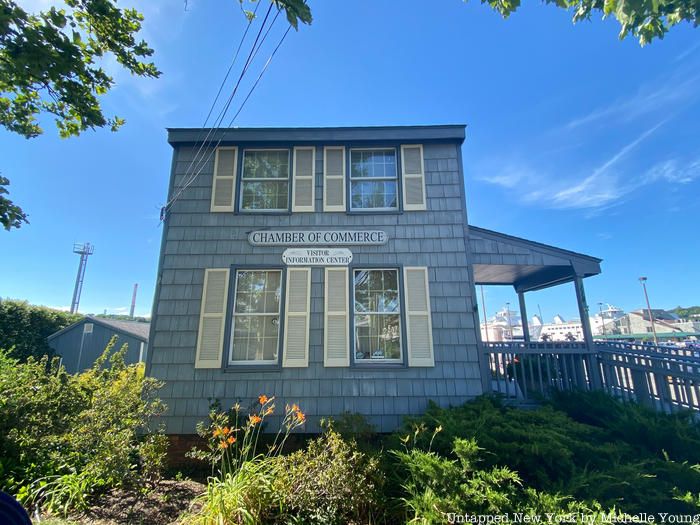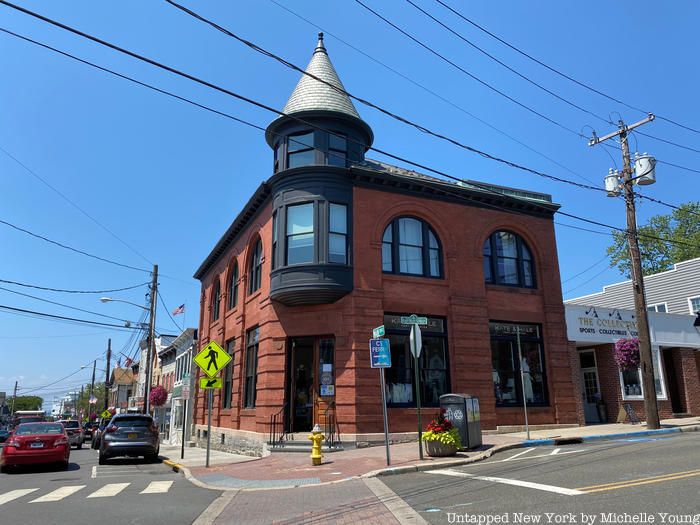How to Make a Subway Map with John Tauranac
Hear from an author and map designer who has been creating maps of the NYC subway, officially and unofficially, for over forty years!



Port Jefferson in Suffolk County is a bustling village once known for its 19th-century shipbuilding industry. Today, parts of a working waterfront still exist, along with a marina, and the terminus of the Port Jefferson-Bridgeport Ferry that plies the Long Island Sound. The walkable village features a number of historic buildings and areas as well as more modern developments like its Harborfront Park and much of its downtown. There’s a diverse offering of culinary options and retail to peruse on a visit to Port Jefferson.

The Port Jefferson Village Historic District contains nearly 100 buildings, a majority built from 1840 to 1870 in the Greek Revival, Italianate, and Victorian styles, and some of these buildings today house eateries and shops. The area was also a contributor in the Revolutionary War, as a number of residences played a role in the Culper Spy Ring. Here is our guide to 10 must-see spots in Port Jefferson.

By Port Jefferson’s downtown is the surprisingly-named Barnum Avenue, named in honor of circus owner P.T. Barnum. Barnum owned a tract of land in Port Jefferson and intended to set up his circus here, yet residents quickly put a stop to his plans. Barnum purchased the area of Brick Hill in the 1870s, yet Barnum’s route book shows that he never performed in Port Jefferson.
Although Barnum’s plans for the circus failed in Port Jefferson, Brick Hill developed as Port Jefferson’s “first suburb” under figures like Harvey Markham, the “general overseer” of the project whose home on Barnum Avenue served as Brick Hill’s real estate office. With “a gang of 24 men,” Markham graded Brick Hill and began advertising the area in August 1875. Today, Barnum Avenue is home to a number of historic Victorian homes dating back to Markham’s plans, and by Port Jefferson’s downtown is the Old Mill Creek Walkway that passes through Barnum Avenue.

The restored Victorian P.T. Barnum House on Barnum Avenue was built around 1890 and was originally owned by P.T. Barnum himself. Captain Charles A. Conk and his wife Louisa K. Hulse purchased the property from Barnum. Conk was known for skippering the Osiris, a 335-foot, 5,000-ton vessel launched from modern-day Harborfront Park.
The home was also believed to be one of the first in the village to have central heating and electricity. The three-bedroom home includes blown-glass windows, an original double door, and new heating and plumbing, and it was valued at $609,000 in 2014.

Suffolk Lodge No. 60, a Masonic Lodge on Main Street in Port Jefferson, was founded in 1797 with the assistance of Robert R. Livingston, Grand Master of the State of New York and the First US Secretary of Foreign Affairs. Freemasonry consisted of fraternal organizations that trace their origins back to stonemason fraternities of the 14th century. Freemasons often met at Masonic Lodges to achieve the “degrees” Apprentice, Fellowcraft, and Master Mason.
Lodge No. 60 suspended operations from 1826 to 1856, and meetings were held under lodge number 401 instead of the original 60; the number 60 was restored in 1876. Lodge No. 60 purchased the nearby Presbyterian Church in 1910, and after considerable remodeling, the first meeting was held in the church in 1912. The “Masonic Temple” is a light-yellow building with dark and light blue windows, blending in with the outdoor garden outside the lodge.

The Drowned Meadow House, previously known as the Roe House, is a small museum highlighting the history of Port Jefferson Village and its importance in the Revolution War. Port Jefferson was previously known as Drowned Meadow since the downtown area was “drowned” by the tide twice a day. The home dates back to 1755 and is an example of “post and beam” construction common during the Revolutionary War. The fragile home survived being moved from four separate locations since its construction, last relocated to West Broadway and restored between 2000 and 2010.
The home was built for Phillip Roe, who supposedly was a member of the Culper Spy Ring along with brothers Nathaniel and Austin, the latter of whom owned a notable tavern in East Setauket. The inside of the home includes a depiction of the Culper Spy Ring trail and an illustration of the first five homes in Drowned Meadow. Also of note is a copy of a letter written by George Washington thanking the spy ring for their efforts in thwarting the British during the Revolutionary War.

The Port Jefferson chamber of commerce is situated in the historic Roe House, named for shoemaker John Roe who built the home in 1682. It was one of the five original homes of Drowned Meadow, and Joe Roe is said to be the first settler in Port Jefferson’s downtown.
The two-story gray structure is situated right on Port Jefferson Harbor on West Broadway. The Chamber of Commerce has been instrumental in helping Port Jefferson businesses reopen, especially President Mary Joy Pipe who also owns East End Shirt Co.

Bayles Shipyard is a historic shipyard added to the National Register for Historic Places in 2000. In the mid-19th century, Port Jefferson was a leading shipbuilding center, accounting for upwards of 40% of Suffolk County’s total production. The Bayles Shipyard was established in 1835 by Charles and James Bayles, and in 1854 the shipyard was divided into two separate facilities for more efficient production. By World War I, the shipyard was transformed into Bayles Shipyard, Inc., used for steel shipbuilding. James Bayles built at least 135 ships at the shipyard, while Charles built around 20 as well.
The shipyard today contains the 1897 Bayles Chandlery, the 1917 Machine Shop and Mould Loft, and the 1917 Compressor House. The Port Jefferson Village Center currently uses the machine shop and mould loft, and a former Mobil Oil terminal at the shipyard was converted to the Jeanne Garant Harborfront Park in 2004. An 1880 home in Port Jefferson Harbor still standing today was inhabited by five generations of the Bayles family.

The First National Bank of Port Jefferson is a 2 1/2-story brick building at the corner of Main Street and E. Main Street built in the late Victorian style in 1900. The structure served as a bank until 1948, when it was purchased by the Town of Brookhaven. The building also includes a two-story turret with a cone-shaped roof, and a one-story brick, flat-roofed addition was built in 1949.
The historic bank was added to the National Register for Historic Places in 2005, and today it features first floor retail space and residential apartments on the second floor.

The Mather House is the current home of The Historical Society of Greater Port Jefferson. The home was built between 1840 and 1860 for the Mather family, prominent Port Jefferson shipbuilders. The home includes a parlor room with furniture typical of the mid-1800s, paintings by local artists like William Davis and Leon Foster Jones, and a Victorian hair wreath displayed on the wall. Additionally, the home features dresses from a Bayles masquerade in 1876 and model hulls used at local shipyards.

Spinning wheels and quilts are found in its craft house, while shipbuilding artifacts are found in its barn, tool shed, and country store.

Harborfront Park is one of Port Jefferson’s newest additions, initially completed in 2001 with more recent additions like the promenade and ice skating rink. The park is named after Jeanne Garant, who served as Mayor of Port Jefferson from 1999-2006. The park was built on the site of a former Mobil Oil terminal and shipyard, and the 5.1-acre property was purchased by the Village in 1997. The park’s master plan was approved in 2000, and in December 2001 the Village completed its Chandlery Waterfront Playground and Picnic Area.
A 350-foot pier was opened in May 2002, which served as the home base of the Seawolf, a marine research vessel used by Stony Brook University. A Promenade with a sand and gravel walkway was opened in 2004, and the historic Chandlery Building underwent exterior reconstruction ending in 2006. The Landmark Sculpture in the park, unveiled in October 2004, depicts four rugged seamen carrying the bones of a ship, serving as a tribute to the area’s shipbuilders.

Most of the beaches on Long Island are restricted to town residents this summer, but there is a small sandy beach in Port Jefferson just adjacent to Harborfront Park behind Danford’s Hotel. From there, you’ll have a view of the marina and the harbor.
The Port Jefferson Long Island Railroad Station is about a 20 minute walk from the downtown area of Port Jefferson. If you visit by train, look out for a sculpture called “…the vast and endless sea…” by David McQueen at the station. Unveiled in 2019, the sculpture serves as a tribute to the village’s shipbuilding industry and depicts three ships supported by 52 boat stands. MTA Arts & Design commissioned the 22-foot stainless steel sculpture, and the three ships depicted are “modified recreation of ships that were built in Port Jefferson during the mid-1800’s.”
Next, check out 12 Places to Discover in nearby Setauket, Long Island!
Subscribe to our newsletter